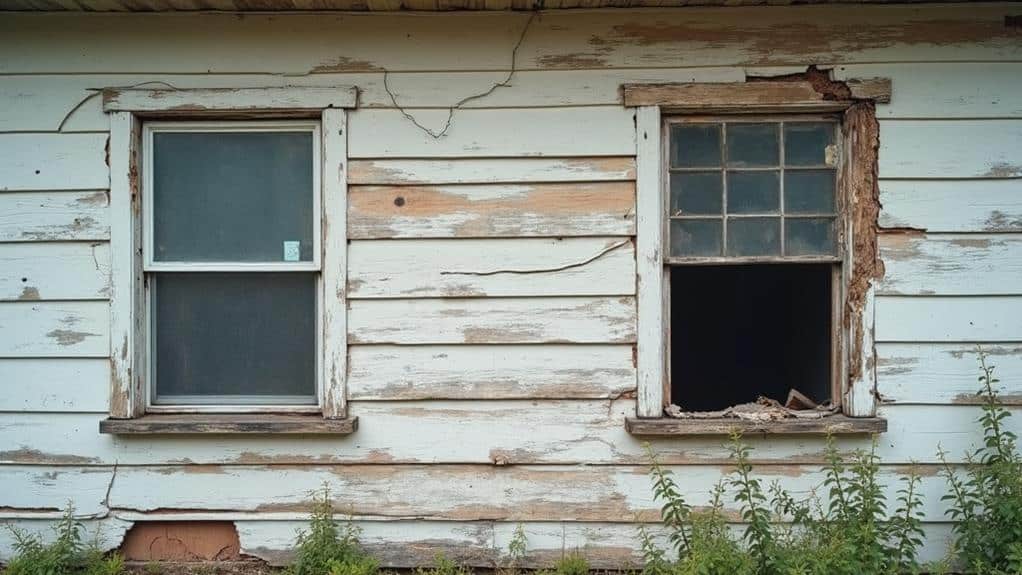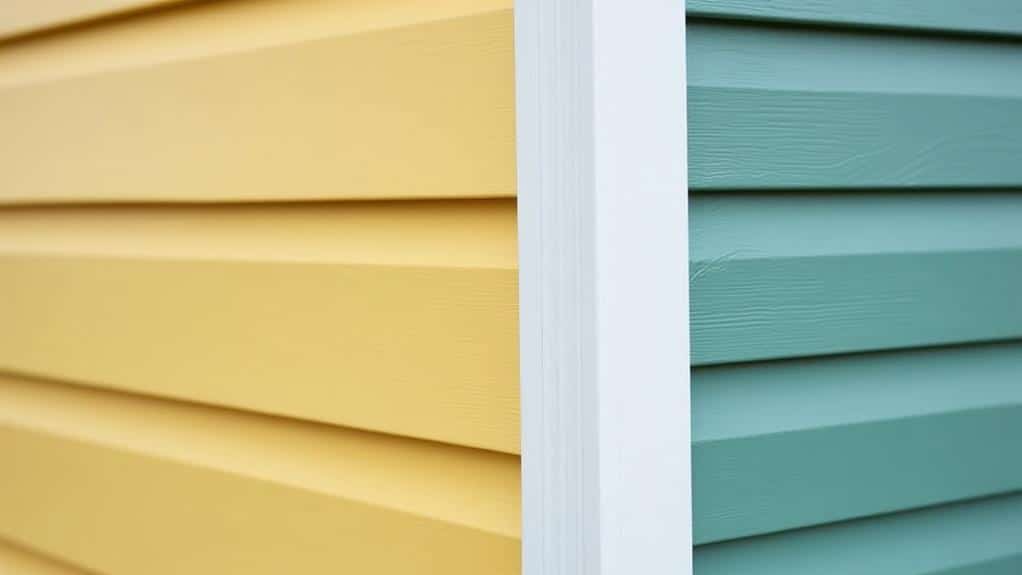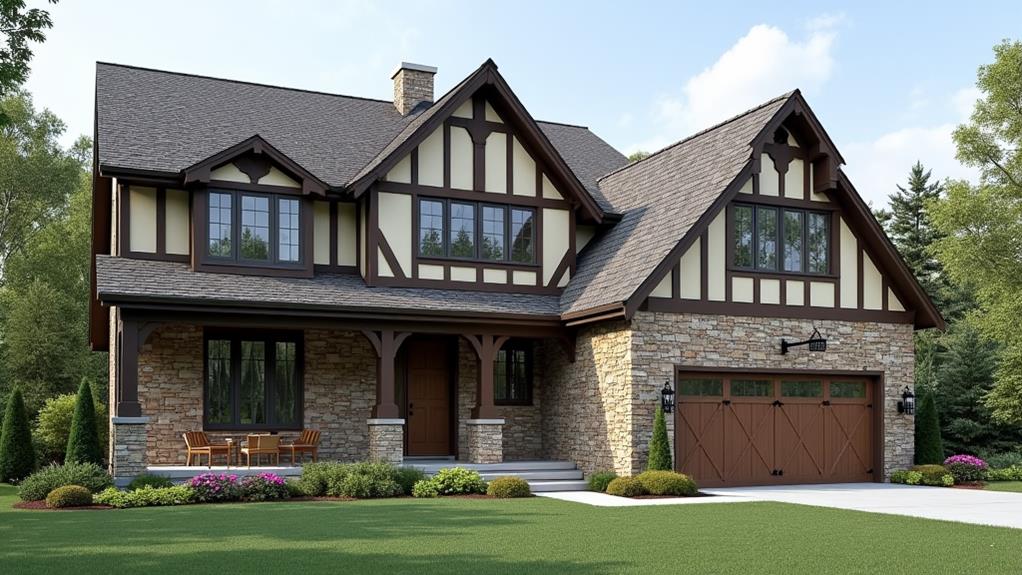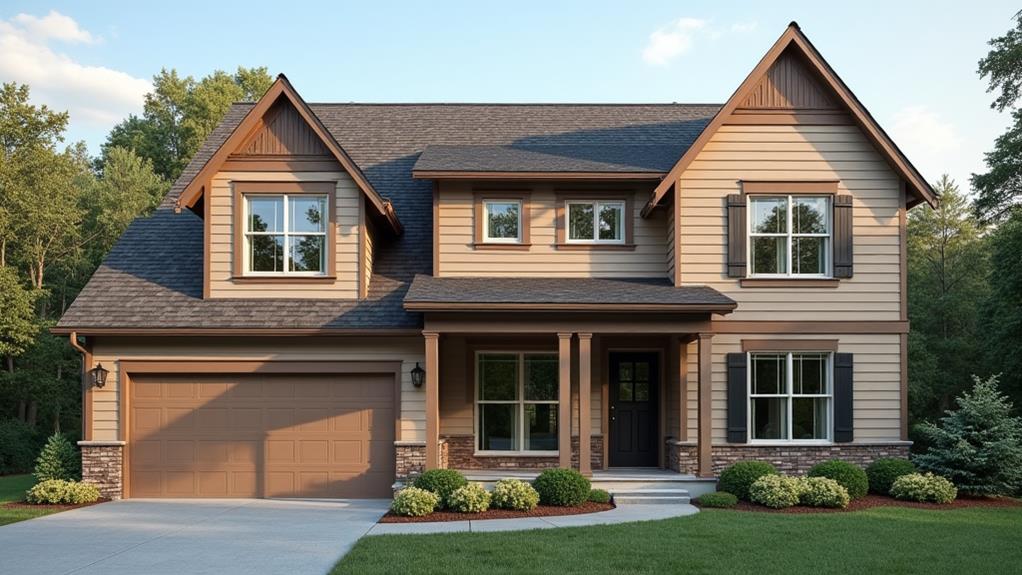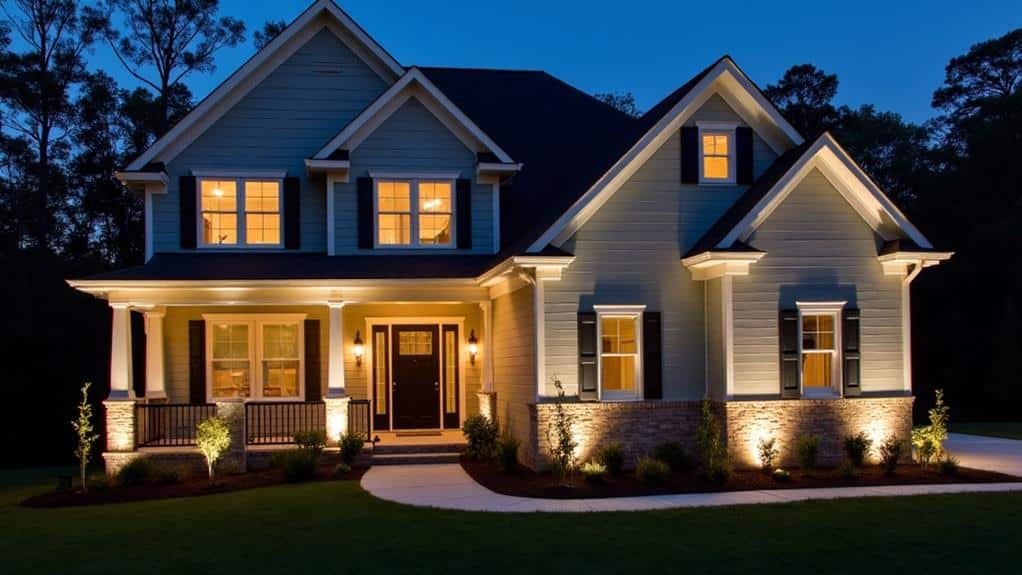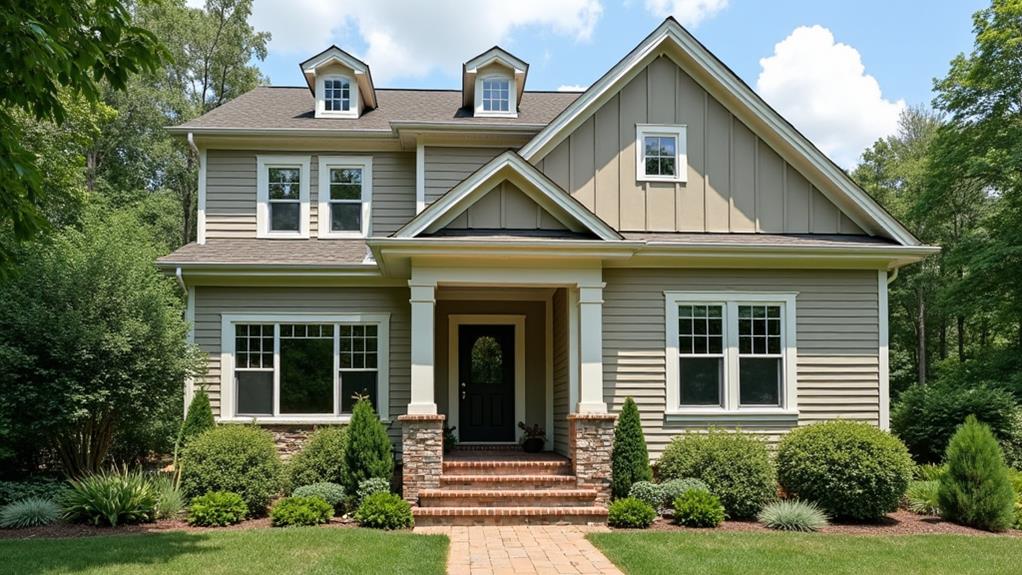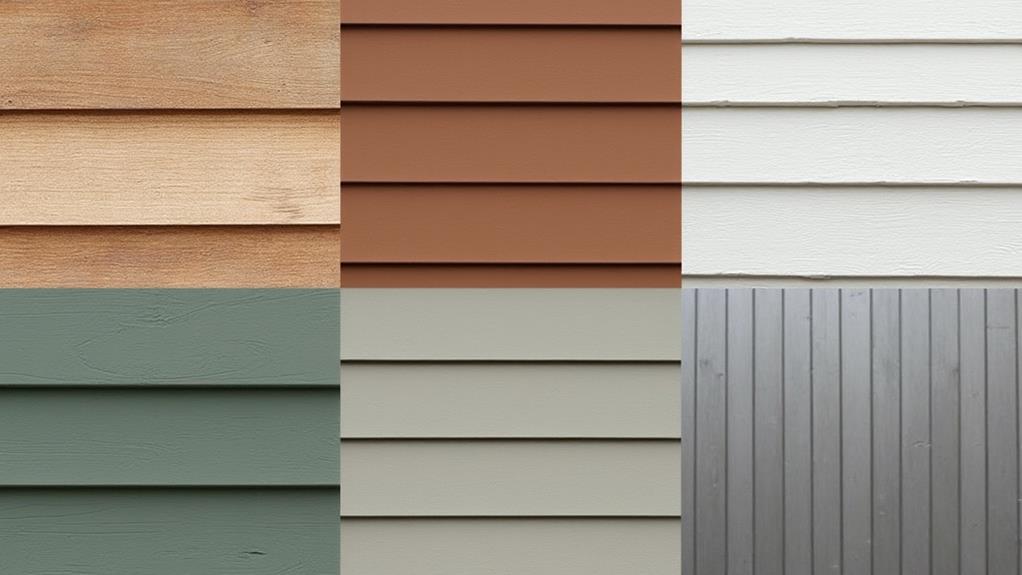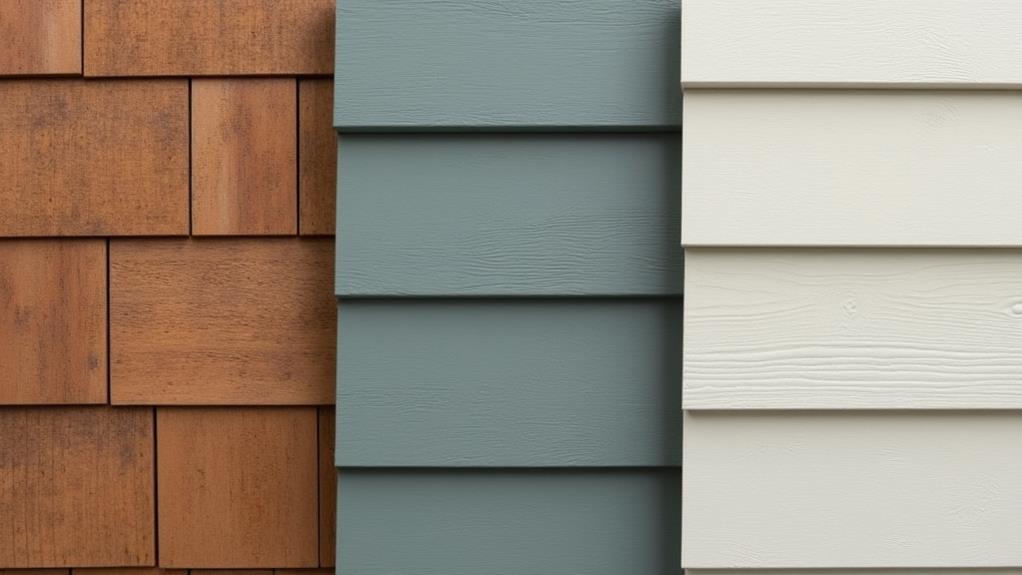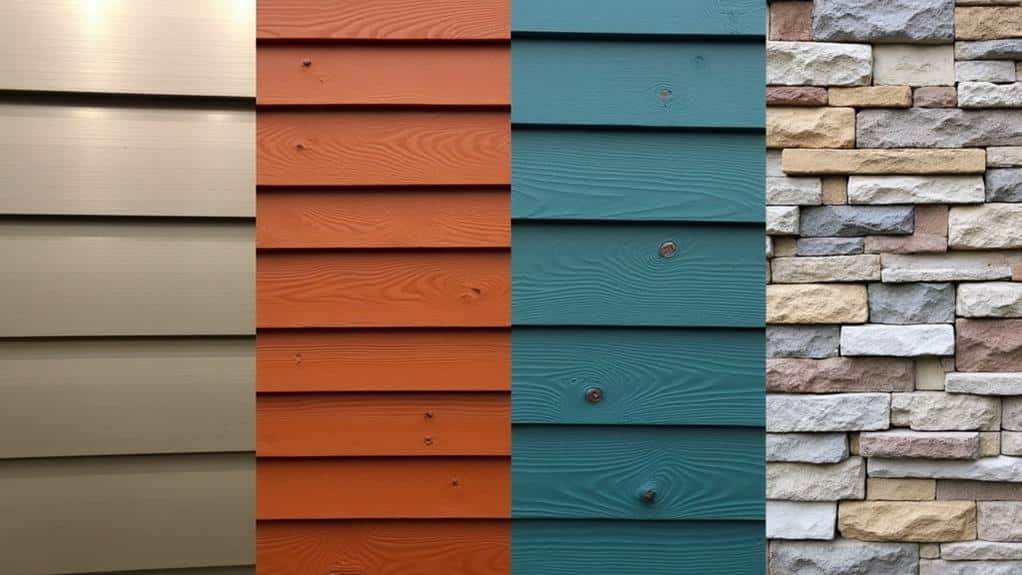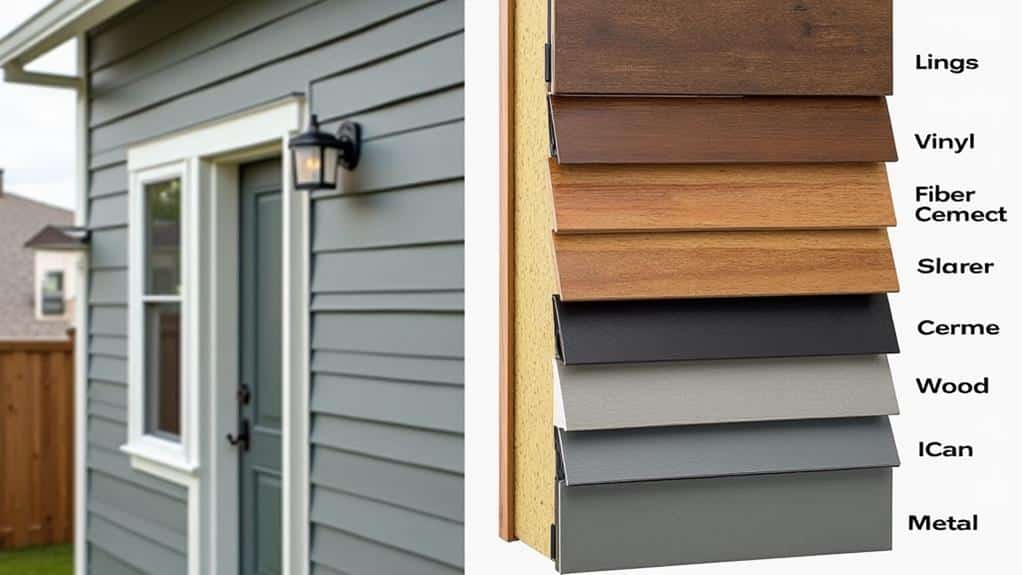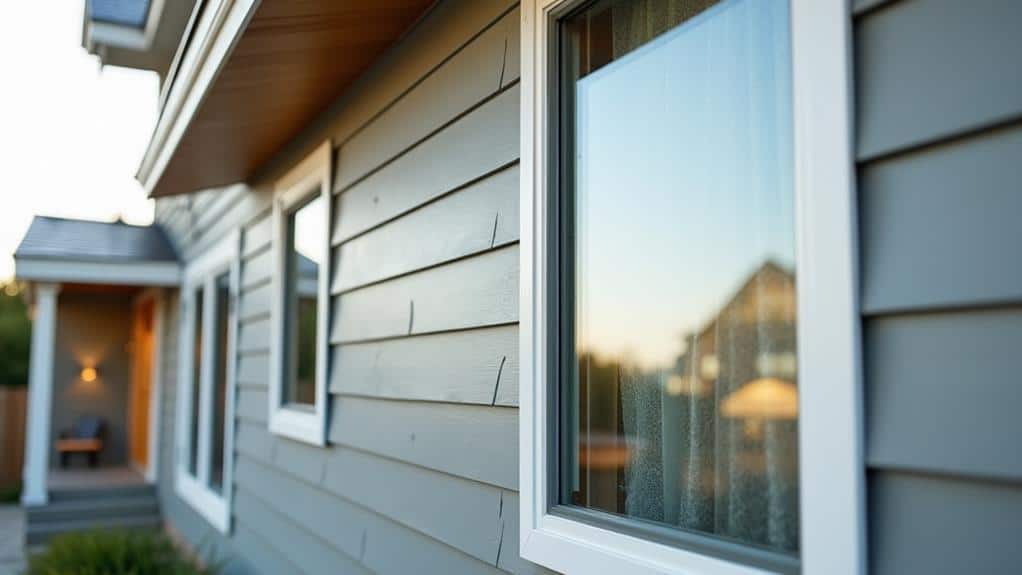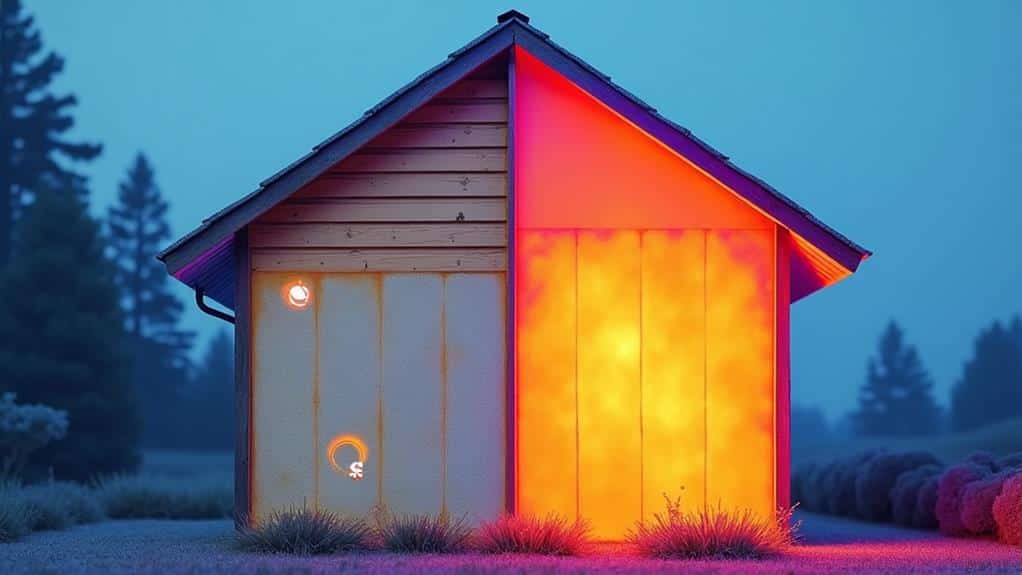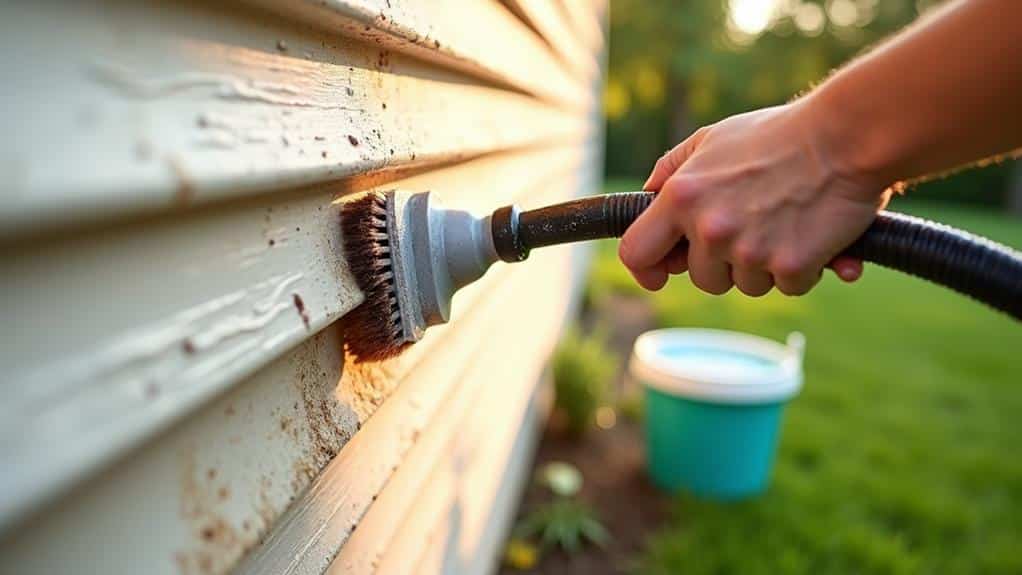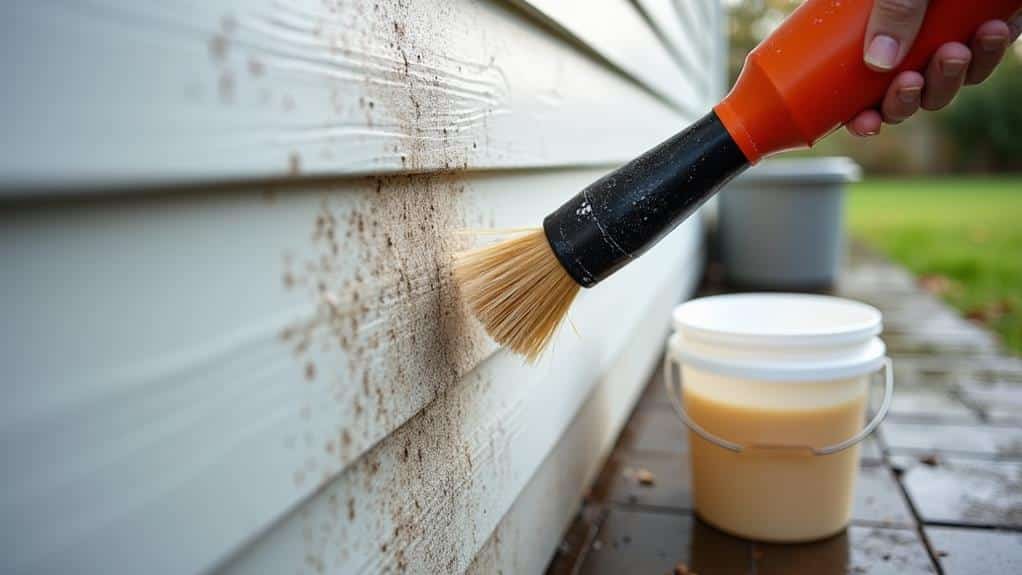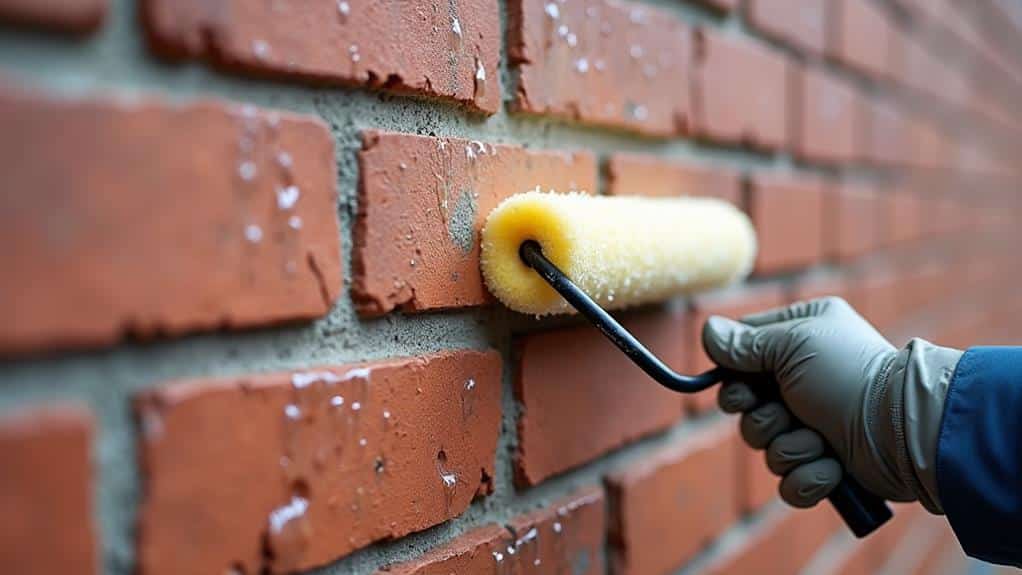Cracks, gaps, and warping in your siding are clear signs it's time to replace it. Siding damage allows water infiltration, leading to moisture problems and costly repairs. If your utility bills have spiked, your siding may be poorly insulating your home. Rotting wood and interior water damage also indicate siding failure. Frequent paint jobs or a faded, discolored appearance can signal it's time for an upgrade. If your siding has developed bubbles, it's no longer providing effective insulation or weather protection. Replacing your siding now can prevent more severe structural issues down the line. Continue reading to learn the top reasons you should replace your siding.
Key Takeaways
- Cracks, gaps, or rotten wood in siding can allow water infiltration and pest entry, compromising the home's weatherproofing and structural integrity.
- Increased utility costs due to poor insulation properties of damaged or outdated siding may indicate the need for replacement.
- Warping or bulging of siding can signify structural issues, moisture intrusion, or improper installation, requiring prompt attention.
- Interior water damage, such as peeling paint, bubbling wallpaper, or mold growth, is a clear sign that the siding is no longer providing adequate protection.
- Siding bubbles can reduce the effectiveness of insulation and weather protection, leading to increased energy costs and potential interior damage.
Cracks or Gaps
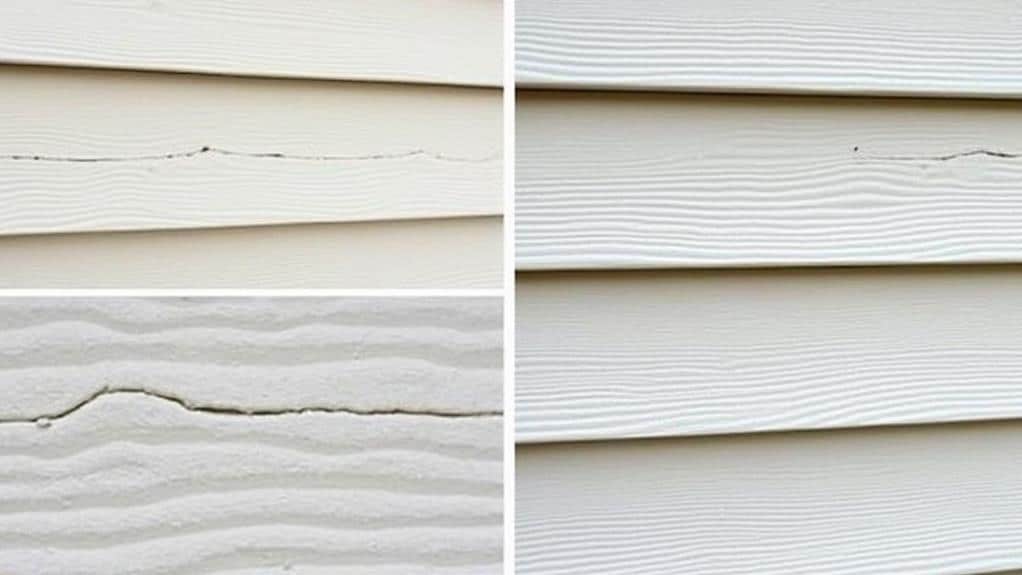
Cracks or gaps in your siding can serve as an ominous warning sign, signaling the need for prompt attention. These openings allow water infiltration, leading to moisture damage that can threaten your home's structural integrity.
Improper installation techniques and environmental factors often accelerate the formation of these problematic openings. Gaps in the siding can also permit pest entry, compromising the overall well-being and protection of your home.
Cracks in the siding indicate underlying problems that require timely action to prevent further deterioration. Addressing these issues is vital to maintain your home's weatherproofing and prevent costlier repairs down the line.
If your siding shows visible cracks or gaps, it's indispensable to have them repaired or replaced to guarantee your home remains secure and energy-efficient.
Increased Utility Costs
Aside from visible cracks or gaps, a more insidious sign that it's time to replace your siding is increased utility costs. Poor insulation properties of damaged or outdated siding can lead to higher energy bills for heating and cooling your home. A professional home energy audit can help identify if siding problems are contributing to elevated utility expenses. Upgrading to more energy-efficient siding, such as fiber cement or insulated vinyl, can drastically reduce your monthly bills.
| Siding Type | Insulation Value | Average Cost Savings |
|---|---|---|
| Fiber Cement | High | 15-25% |
| Insulated Vinyl | Moderate | 10-20% |
| Standard Vinyl | Low | 5-15% |
Homeowners may recoup the cost of quality siding replacement through long-term savings on heating and cooling costs.
Rotten Wood
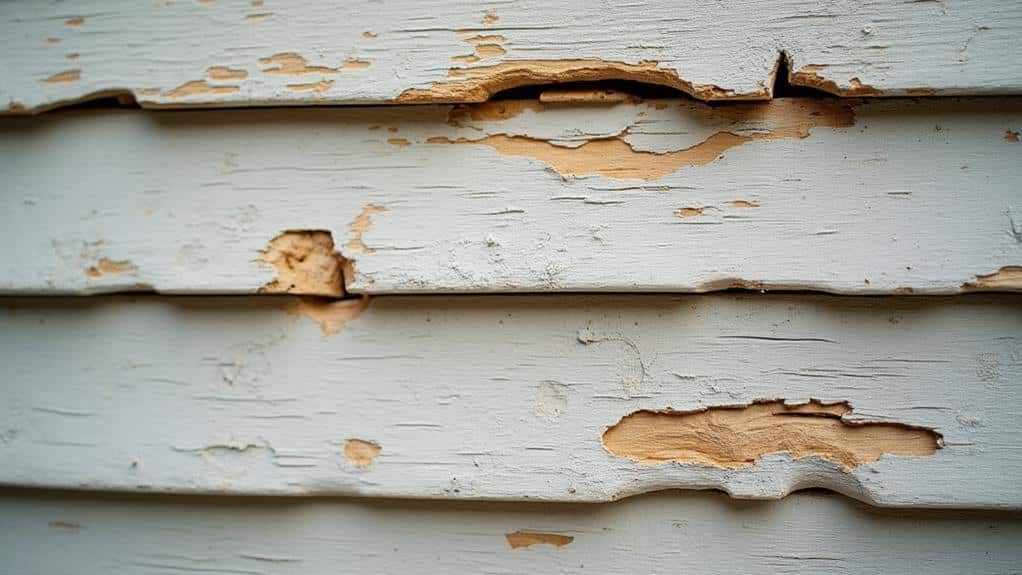
Rotten wood in your siding is a clear indication that replacement is necessary. This discolored, textured, and crumbling wood signals advanced decay from wood-eating fungi, compromising the structural integrity and protective function of your home's siding.
Poor installation practices and inadequate maintenance often accelerate wood rot development, especially in Minnesota's variable climate. Ignoring this issue can lead to further damage, water infiltration, and potential structural problems within your home.
The presence of rotten wood requires careful monitoring and often necessitates complete replacement to address the underlying moisture issue. Replacing the rotten wood siding with a more durable, moisture-resistant material, such as fiber cement, can help prevent future rot and provide long-lasting protection for your home.
Warping and Bulging
Warping or bulging of your siding is a clear sign that something is amiss. It indicates structural issues, moisture intrusion, or improper installation that compromises the siding's protective function.
While durable material options like fiber cement and steel siding resist warping better than other choices, any siding can develop these issues over time. Bulging siding can lead to cracks, gaps, and further deterioration, allowing water penetration and potential mold or rot.
This warped siding detracts from your home's curb appeal and may be a sign that the siding has reached the end of its lifespan. Severe warping or bulging often requires full replacement rather than patchwork repairs to restore your home's weather resistance.
Properly installed, high-quality siding materials are less prone to this issue, so it's time to replace your siding if this is the cause for alarm.
Interior Water Damage
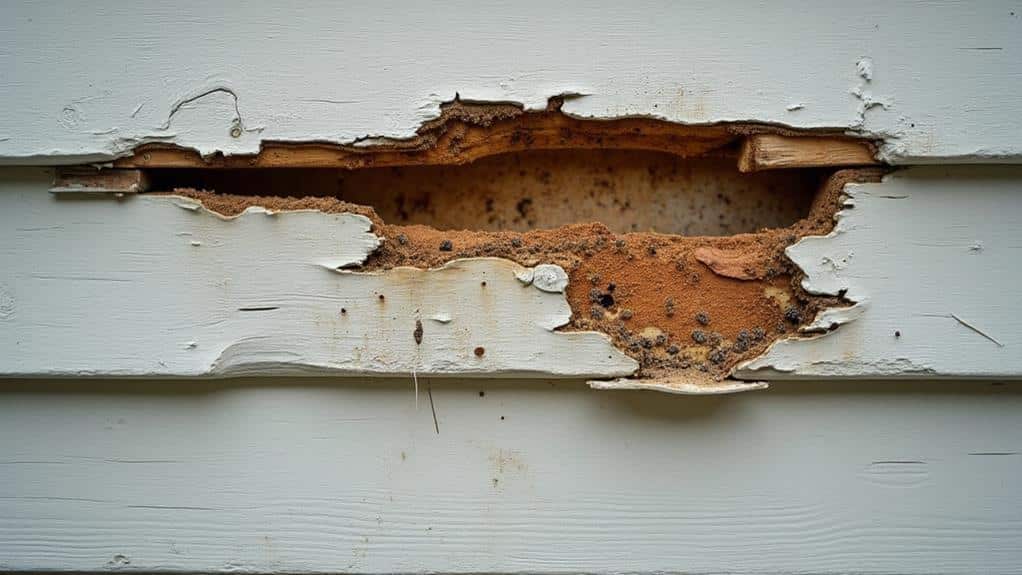
Interior water damage is a clear sign that your home's siding is failing and allowing moisture to penetrate. After severe storm impact damage, water intrusion through compromised siding becomes even more likely.
Regular post-storm inspections can help identify potential damage before it worsens. Peeling paint, bubbling wallpaper, or damp drywall can indicate that water is getting into your home's interior. Mold and mildew growth inside is a red flag that your siding is no longer providing adequate protection against water.
Rotting or deteriorating wood framing or studs behind the siding often results from long-term exposure to moisture entering through the failing siding. Addressing this interior water damage requires a thorough inspection to identify and resolve the root cause, which may necessitate a full siding replacement.
Frequent Paint Jobs
If your home's siding requires repainting every few years, it's a clear sign that the material has reached the end of its lifespan. This continuous need for maintenance can lead to costly repair expenses that could have been prevented through proper upkeep.
Frequent paint chipping or peeling indicates the siding is deteriorating, and ongoing maintenance will be necessary. When siding needs to be repainted too often, it suggests the material lacks the crucial to provide long-lasting protection. Repeated paint jobs are a symptom of siding that can no longer effectively shield your home from the elements.
Excessive repainting needs point to the necessity for siding replacement to improve your home's weatherproofing, energy efficiency, and overall curb appeal. Replacing your old siding is indispensable to protect your home and maintain your property's value.
High Energy Costs
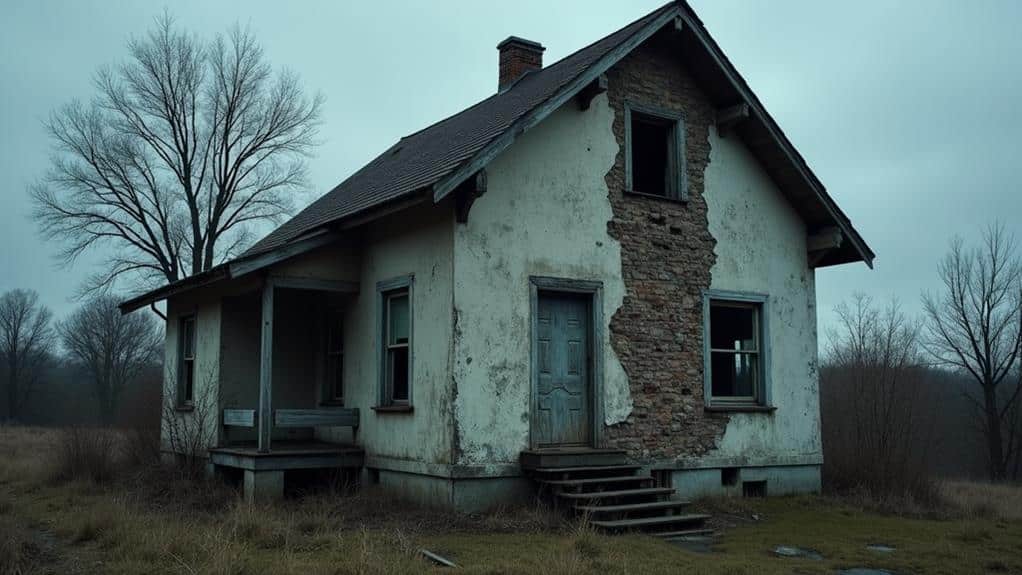
One of the clearest signs that your home's siding needs replacement is a substantial increase in your energy costs. Failing siding can lead to considerable energy loss, causing heating and cooling costs to rise dramatically.
Outdated or damaged siding that allows air leaks can decrease your home's energy efficiency, resulting in higher utility bills. Upgrading to high-performance, well-insulated siding can greatly improve your home's thermal envelope and reduce energy consumption.
Thorough siding replacement is one of the most effective ways to enhance your home's energy efficiency and lower monthly energy costs. Poor siding insulation is a common culprit for excessive heating and cooling needs, necessitating a siding upgrade to improve your home's energy performance.
Faded Siding
Faded siding is a clear indicator that your home's exterior has fallen victim to the relentless march of time and the elements. Severely faded siding signals compromised weatherproofing, diminishing its ability to safeguard your home.
As the siding's color continues to worsen over time, the need for frequent repainting becomes a symptom of an underlying issue. Upgrading to siding with longer-lasting color, like fiber cement with ColorPlus Technology, can eliminate this problem.
However, if the siding has reached the end of its lifespan, replacement is warranted to guarantee your home remains well-protected and looking its best.
Siding Bubbles

Beyond the visual signs of wear, siding bubbles pose a serious threat to your home's structural integrity. These bubbles indicate trapped moisture within the siding material, signaling a pivotal issue that requires immediate attention.
Bubbles can form due to water infiltration, poor installation, or material defects, compromising the siding's protective barrier and leading to further water damage. A thorough visual inspection is warranted to identify the root cause and determine if the siding needs replacement to prevent long-term structural problems.
Siding with bubbles may no longer provide effective insulation or weather protection, potentially leading to increased energy costs and interior damage. Addressing siding bubbles promptly is vital to maintain the integrity of your home's exterior and prevent costly repairs down the line.
Frequently Asked Questions
How to Tell if Siding Needs Replacing?
You'll know it's time to replace your siding if you notice visible wear and tear, compromised insulation, fading color, or an uneven texture. These signs indicate your siding is no longer effectively protecting your home.
When Should You Get New Siding?
If your siding has a worn appearance, poor energy efficiency, impact damage, or fading color, it's time to get new siding. Investing in durable, low-maintenance fiber cement can boost your home's value and curb appeal.
Is It Worth It to Replace Siding on a House?
Replacing your siding is often worth it when you consider the cost-benefit analysis – it can boost energy efficiency, reduce maintenance needs, enhance your home's curb appeal, and increase its resale value.
What Happens if You Don't Replace Your Siding?
If you don't replace your siding, your property value may decline, maintenance costs can rise, and you risk potential structural damage and water intrusion – all of which can lead to costly repairs down the line. It's important to address siding issues promptly.
Conclusion
You'll want to replace your siding if you notice cracks, gaps, or rotten wood. Higher utility bills, water damage, and frequent paint jobs are also signs it's time. Warping, bubbling, or faded siding indicates it's no longer effective. Don't wait until the damage gets worse – contact MWCR Homes to address issues promptly and maintain your home's curb appeal and energy efficiency.


